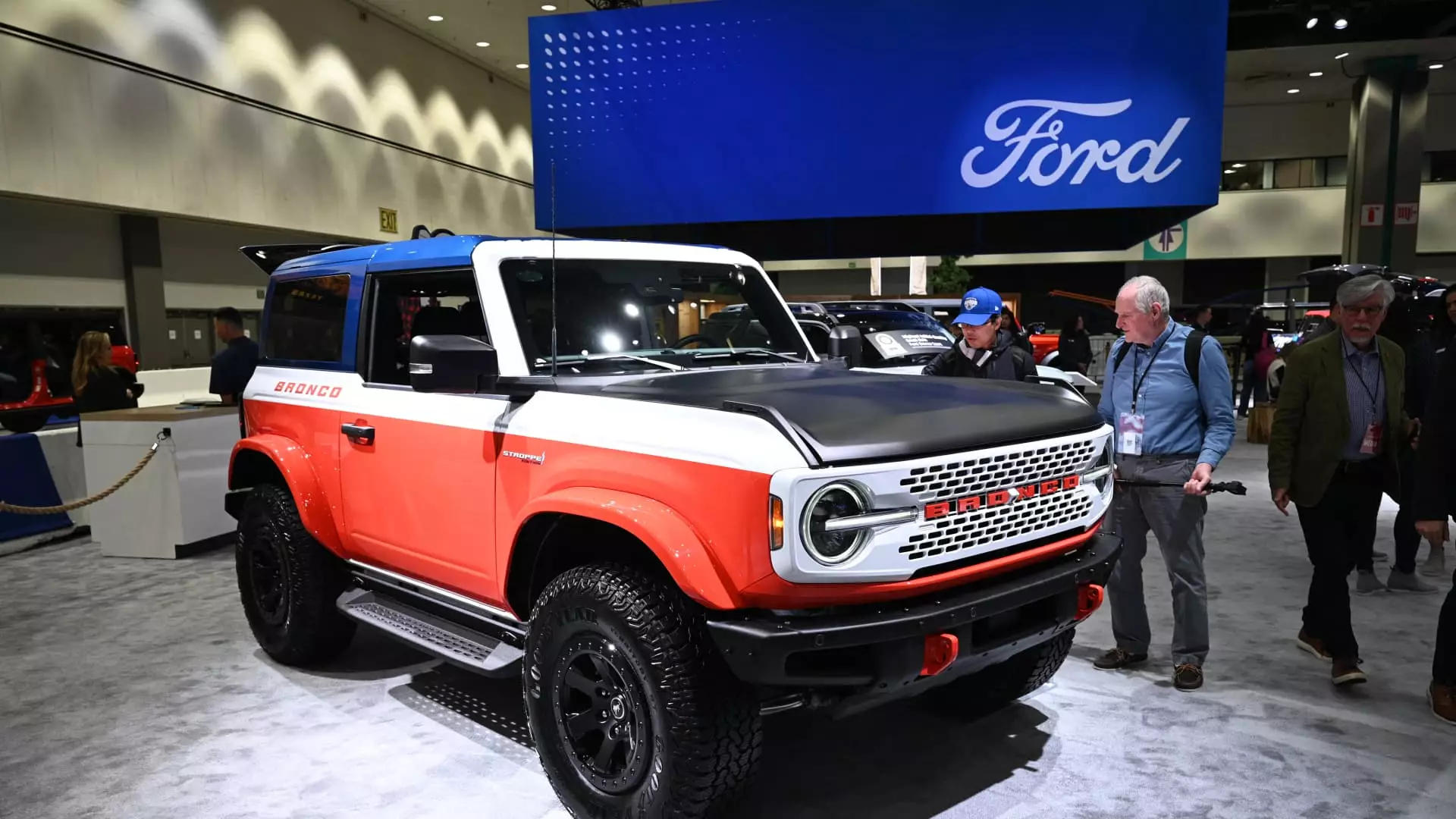In a significant turn of events, General Motors (GM) and Ford Motor Company have declared 2024 as their best year for U.S. vehicle sales since the onset of the COVID-19 pandemic. This resurgence is indicative of the broader auto industry’s recovery, as sales figures reflect an easing of the supply chain disruptions that have plagued the sector for several years. Analysts had anticipated this upswing, forecasting nearly 16 million new vehicle registrations in 2024, a notable jump from the 17 million sold in 2019. The return to pre-pandemic sales levels represents not only a recovery but also a fortification of market resilience in a highly competitive environment.
Both GM and Ford have posted impressive sales figures. GM retained its title as the highest-selling automaker in the United States, reporting over 2.7 million units sold—an increase of 4.3% from the previous year. This achievement is particularly remarkable when considering that GM’s 2019 sales reached nearly 2.9 million vehicles. The company attributes its success to innovative designs and performance enhancements across its lineup, delving into electric vehicle (EV) technology to meet consumer demands. Their electric vehicle sales soared close to 50%, reaching over 114,400 units, albeit still constituting just 4.2% of their overall sales.
Ford, on the other hand, witnessed a substantial growth of 8.8% in fourth-quarter sales, bringing its total to roughly 2.08 million vehicles for the entire year. Yet, its relationship with electrified vehicles has proved fruitful, marking a stunning 38.3% increase in this category year-over-year. This category, which includes both hybrids and fully electric models, accounted for 13.7% of Ford’s total sales—a solid indicator of the shifting automotive landscape toward greener technologies.
The growth experienced by GM and Ford is echoed by several other key players in the automotive market. Toyota, despite a slight dip in December sales, recorded a 3.7% increase overall, selling more than 2.3 million vehicles. Similarly, Honda’s performance showed an 8.8% boost, positioning their total sales at 1.4 million. Hyundai and Kia, both sibling companies, exceeded previous records, showcasing a 4% and 1.8% increase in sales respectively. Such figures underline a collective recovery across the industry, as car manufacturers adapt to emerging consumer preferences and technology shifts.
The Electric Vehicle Market: A Growing Segment
As the automotive landscape evolves, the rise of electrified vehicles has become a focal point for manufacturers and consumers alike. While GM’s and Ford’s sales figures indicate a burgeoning interest in EVs, these models still represent a small fraction of their overall sales. Nonetheless, GM’s reported 12% share of the EV market in the fourth quarter is a promising sign for the automaker, suggesting an upward trajectory that could signify more extensive market dominance in the coming years.
Ford’s impressive electrified vehicle sales consider traditional combustion engine models as well. As manufacturers continue to strive for a balanced portfolio, their investments in sustainable technologies will likely shape future sales and consumer engagement strategies.
Looking Ahead: Prospects for 2025 and Beyond
With strong sales and recovery from previous disruptions, both GM and Ford have established a formidable foundation as they approach 2025. Rory Harvey, GM’s president of global markets, commented on the positive momentum, hinting towards an overarching strategy that will revolve around innovative vehicles designed to meet evolving consumer expectations. As gas prices fluctuate and environmental awareness rises among consumers, it is anticipated that demand for both EVs and hybrids will increase, steering the automotive market towards sustainability.
The optimistic sales reports from GM, Ford, and their competitors illustrate a rebound within the automotive sector post-pandemic. The ongoing shift toward electric vehicles serves as a testament to the industry’s willingness to adapt. As manufacturers gear up for a more competitive future, consumer preferences will undoubtedly steer the direction of the automotive landscape. Whether on the road or in the boardroom, the focus will remain on innovation, sustainability, and customer satisfaction.

